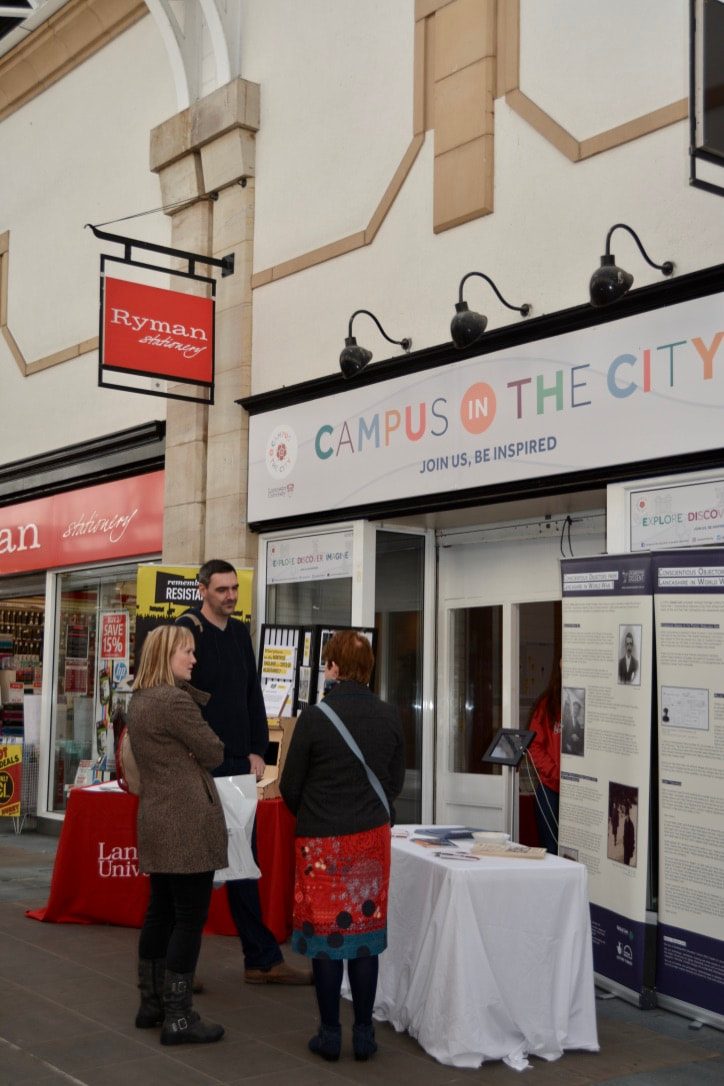|
A blog post written by volunteer Emily Brooks on her research looking at women's activism in West Yorkshire... "Tea and cake round at mine?" This is the first question I ask my friends when we are arranging to meet up, so it's not something I would associate with resistance. However, during my research for the project, I discovered some very interesting, non-typical spaces for protest - women’s homes, specifically living rooms.
When I think of protest, I think of marching, banners and parades. But there are cases of women meeting in each other’s homes to discuss their grievances. An intimate and private space which highlights the courage that these women have in opening their homes up to other women who were, in the beginning, strangers. One woman I came across during my research was named Elaine Connell from Hebden Bridge. When she moved to Hebden she advertised for a women’s group in the local newspaper. She ended up having meetings in her own home. But she was not the only one. In Hebden Bridge, in the 1970's, a woman called Annie Fatet held a group at her house at what was then The Bull where, along with the many issues the women had, they would talk about women's health. It was a moment for them, who confessed they didn't have the education, to come together in resistance to the conforming way of living and make a point to look after each and stand up for one another. Other topics of discussion included feminism, talking about understanding the female body and different sexualities as well as redefining women's roles. These groups, coming together in such an intimate, private space, would move their acts of resistance to public spaces. A Women's Exhibition was held in Hebden Bridge at Pitt Street in the 1970's. As well, there were campaigns at the Adult Education Centre, Pitt Street - a transformation of the private to the public but with the public sphere educational, rather than the expected political space.
0 Comments
 The project is looking for an education / engagement consultant to produce a ‘Protest in a Box’ resource kit for use with schools and interested community groups, working collaboratively with schools, groups and the Project team. The budget is £4000 inclusive of expenses, work needs to be completed by September 2019 and the deadline for applications is Friday 17th May 2019. Please email Claire on c.selby@lancaster.ac.uk for more details. We would love to hear your ideas! Last week was an exciting and busy time for the Remembering Resistance team, as we organised two pop-up events on Thursday and Saturday, and a workshop on Friday. We are so grateful to everyone who took the time to share their inspiring stories with us and are incredibly excited about the next phase of the project. Thursday saw the team in Lancaster city centre as part of Lancaster University’s Campus in the City event. This brings people from across the university to the city centre to share their work and research. Remembering Resistance set up in a shop along with the Documenting Dissent project. We had a terrific day talking to people about activism, ran some of our activities, and showed our timeline of protest in the North of England over the past 100 years. We also heard some amazing stories from women about their activism. We were inspired by one woman who stopped to tell us about her lifetime of campaigning. Starting at the age of five, she marched for the National Health Service with her Dad, going on to set up a shelter for victims of domestic violence in Lancaster, and has been an active campaigner for a range of causes ever since. Now 85, she emphasised how important it is to let young people know about how women have fought for change. She left a real impression on us and gave us even more energy to capture and celebrate women’s stories of activism. On Friday, we held a workshop at Lancaster University with our volunteers to collaboratively explore what we wanted to show in the final project exhibition. Over the past few months, the volunteers and Richardson Institute interns have been busy collecting loads of data on protest events as well as conducting oral histories with women. Together, we looked at this data to get a sense of what stories we might highlight in the exhibition. We also did a fun exercise to design what the exhibition might look like. We came away feeling energised and really positive about what we have collected, what we have yet to do, and the amazing things that women have done in the past century in the North of England. Finally, the team went to Durham on Saturday to take part in the Women’s Banner Group Hustings. Held in the 113 year-old Durham Miners Hall at Redhills, the event brought people together to celebrate women’s achievements in the North East. It started with a great discussion on the strong history of women’s activism in Durham. The hustings was really enjoyable, as people stepped forward to nominate women for a blue plaque. If successful, this would be only the second blue plaque in the city about a woman! The stories we heard of resilient, independent women were incredibly powerful and so very clearly demonstrated that Durham women are, indeed, fighters! The week that was gave us much to think about and definitely much to celebrate so thanks again to everyone who took part! |
BlogHere's where we let you know what we're up to Archives
April 2021
|







 RSS Feed
RSS Feed